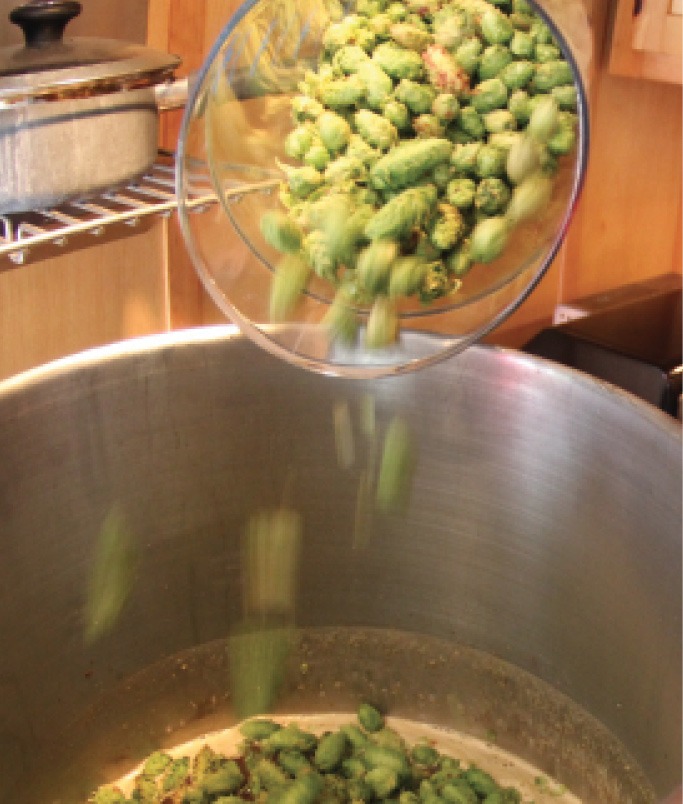Beginner Bittering Basics

Hops are generally divided into two types: bittering and aroma (although some hops can be used for both bittering and aroma). Bittering hops usually have higher percentages of alpha acids, which are the compounds responsible for the bitter flavor, than aroma hops. For example, Galena, one of the most commonly used bittering hops in US commercial brewing, can have anywhere from 10 to 14% alpha acids.
Compare that to Cascade, a hop commonly used for aroma in US ales, which can have 4.5 to 8% alpha acids. The higher alpha acids in Galena or other bittering hops means that you could use less hops to bitter your beer than if you used a lower-alpha aroma hop, which can mean the difference between buying a half ounce of hops or two ounces. The aromatic qualities of hops tend to get boiled away, especially when added at the beginning of the hop schedule, so brewers sometimes use a more generic bittering hop at the beginning of the boil without affecting the taste of the beer too much and save their money for adding aroma hops later in the boil or after the boil is over. But like everything in brewing there are brewers who seemingly contradict the rules. The traditional noble hop varieties grown in and around Germany are prized for aroma, but historically have also been prized for their “soft” bittering properties. Some brewers still use these relatively expensive and lower alpha varieties for bittering.
Hops need to be boiled to get the bitterness into the beer. When the bittering hops are added during the boil, the alpha acids isomerize — that is, the resins are changed into different forms that are more water soluble, which are then dissolved into the wort. The more alpha acids in the brewpot, the more bitter the beer. It can take anywhere from 45 to 90 minutes of boiling to isomerize the alpha acids. The longer the hops are boiled, the greater the utilization (up to a point). This is important because timing is everything: if you want to extract a lot of bitterness you will boil the hop longer; less bitterness and more aroma means less boil time. Be sure to follow the hop schedule in your recipe closely.
You will see in BYO recipes that hops are measured in ingredients as AAUs, Alpha Acid Units, which is a measurement that applies only to 5-gallon (19-L) batches. For example, in the recipe for “The Replicator” on page 12, the first bittering hop added to the boil is Magnum: “7 AAU Magnum hop pellets (60 min.) (0.5 oz./14 g of 14 % alpha acid).” This is expressed this way because each batch of hops is measured for its percent alpha acids (%AA), which is the amount of bitterness the hops will provide to a beer based on measurements taken in a lab using a spectrophotometer and solvent extraction. The higher the number, the more bitter the hop. The number of ounces of hops to use is multiplied by its alpha acids to get the alpha acids unit (AAU number).
The International Bittering Units (IBU) scale measures the analytical bitterness in beer and does not always correlate with perceived bitterness. Lower values are less bitter and higher levels are bitterer. You will see hops used for bittering measured this way in homebrew recipes, such as in the recipe statistics at the beginning of each recipe in BYO.
You will also see this information printed on labels for finished craft beers — especially those with an emphasis on hops, such as double or imperial IPAs.



